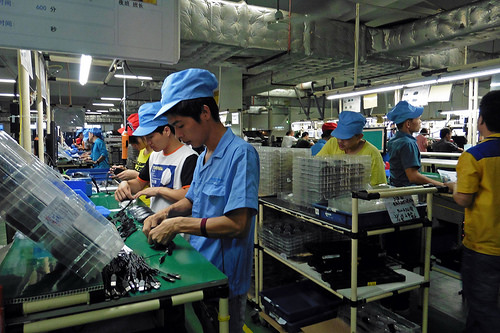The assembly line has evolved a lot since the early days of the 1800s when it first appeared in the meat packing and later, the automotive manufacturing industries. Back then, workers were required to remain in their designated workstations and perform a single task. Assembly lines quickly became popular because they increased production, while employers could quickly train their workers. In addition, employees needed only minimal skills to work on an assembly line, which meant companies had a much larger pool of potential employees to hire.

Here are the basic skills required of today’s assembly line worker:
Physical strength
Because assembly line workers must remain, often standing, in the same place for long durations of time, they require a certain amount of strength or stamina. Those who have knee, feet or back problems are unsuited to the job because it means they cannot do so. Employees need the physical ability to move freely and perform the same repetitive tasks over and over.
Good coordination
It’s important that employees possess good hand-to-eye coordination, as this is an essential skill in order to perform repetitive tasks at a rapid, constant rate. Workers usually perform just a single task repeatedly, using their hands and/or tools to complete their specific task. Machines move at constant speeds, which necessitates that the task is performed at a constant speed to avoid interruptions on the assembly line.
Communication skills
Workers must possess good communication skills as well. It’s important that workers can communicate with each other orally in order to keep the line running efficiently. Problems or information often needs to be passed down the line to other workstations to prevent issues arising and keep the workflow steady. As such, clear speech and good hearing are essential.
Mechanical knowledge
It can sometimes be difficult to keep up with changes in production when a company grows too fast. They need to automate and make the transition easier – for both the company and the workers. As such, employees are often required to use various hand tools to get the job done faster. Packaging machines / bandningsmaskin helps companies with these changes.
Computer literate
Technology has become mainstay of the assembly line, and so workers will need at least basic computer skills to perform tasks like data entry in order to document the various jobs that have been completed. In addition, computers may be needed to test or examine completed parts or products.